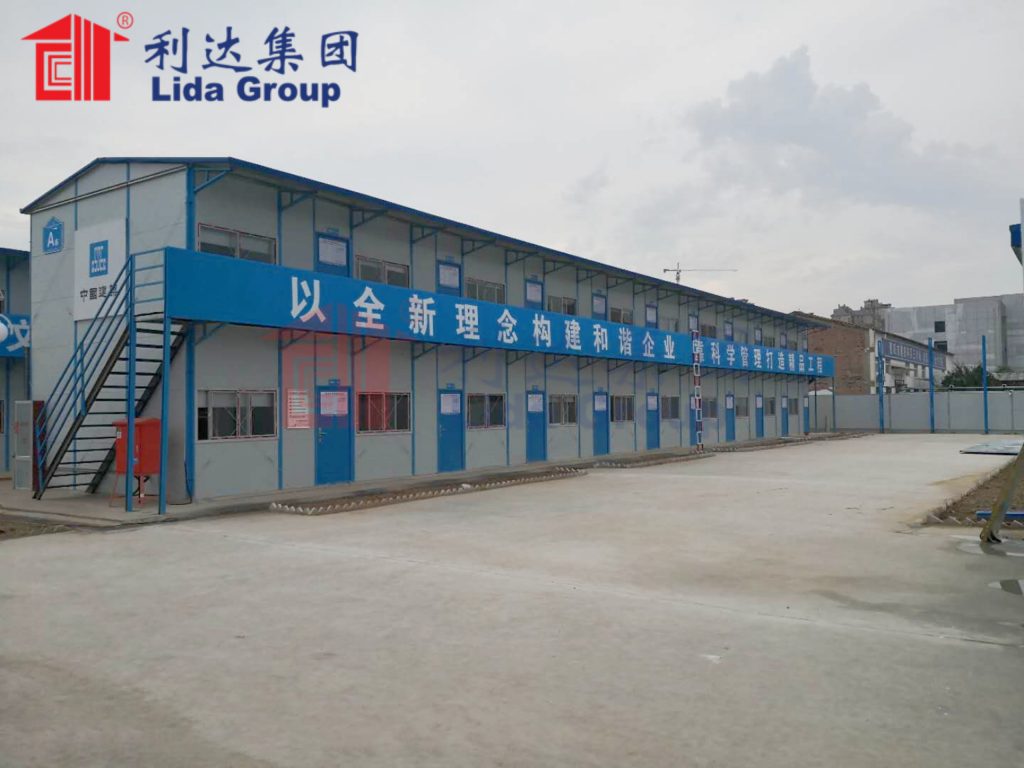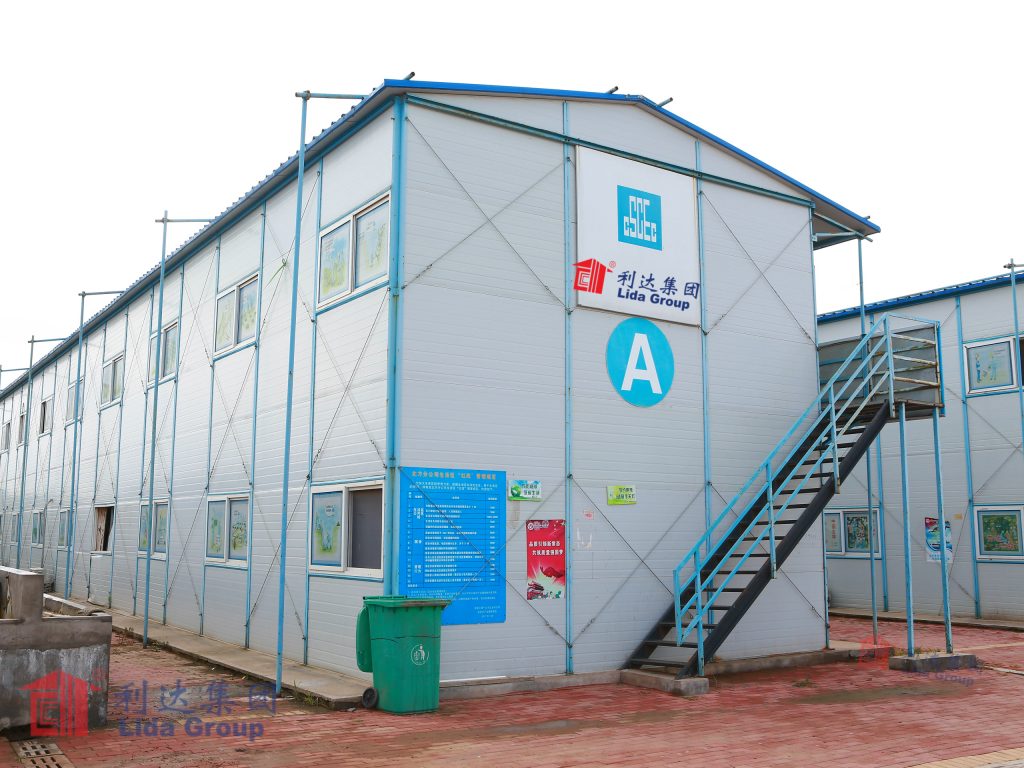In an era defined by rapid urbanization, climate change, and growing housing shortages, the construction industry stands at a crossroads. Traditional building methods—often slow, labor-intensive, and resource-heavy—are increasingly inadequate to meet the demands of modern society. As populations swell in developing nations and natural disasters displace millions each year, there is an urgent need for housing solutions that are not only affordable but also sustainable, durable, and quick to deploy.
Enter Lida Group, a forward-thinking Chinese manufacturer and innovator in the field of prefabricated construction. With over two decades of experience in steel structures and modular building systems, Lida Group has emerged as a global leader in delivering low-cost, high-performance housing through its advanced sandwich panel technology. These innovative panels form the backbone of a new generation of homes that combine energy efficiency with easy-assembly design—offering a scalable solution for the future of global housing.
This article explores how Lida Group’s sandwich panel houses are redefining what is possible in affordable construction. From their core technology and design principles to their environmental benefits and real-world applications, we will examine how these structures are not just buildings, but blueprints for a more resilient and sustainable world.
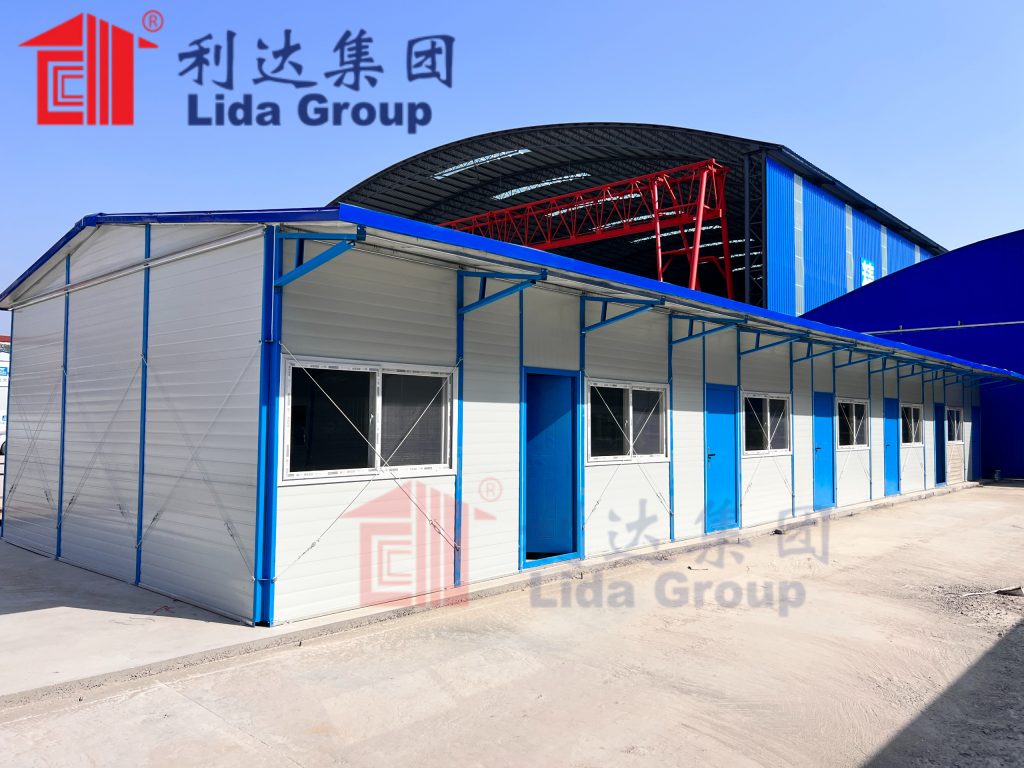
The Global Housing Crisis: A Call for Innovation
Before delving into Lida Group’s solutions, it is essential to understand the scale of the challenge. According to the United Nations, over 1.6 billion people worldwide live in inadequate housing, with 15 million displaced annually due to natural disasters, conflict, or forced evictions. By 2030, the global housing gap could widen to 3 billion people if current trends continue.
Urban centers in Africa, South Asia, and Latin America face particular pressure. Cities like Lagos, Dhaka, and Jakarta are expanding rapidly, often outpacing infrastructure development. Meanwhile, rural areas suffer from a lack of access to quality building materials and skilled labor. In both cases, conventional construction is too slow and expensive to keep up.
The problem is compounded by climate change. Rising temperatures, extreme weather events, and sea-level rise threaten existing housing stock and make traditional building practices less viable. There is a growing consensus that future housing must be not only affordable but also energy-efficient, disaster-resistant, and low-carbon.
This is where prefabricated construction, particularly using sandwich panel systems, offers a compelling alternative. Unlike site-built homes that can take months or even years to complete, prefabricated houses can be manufactured in factories and assembled on-site in a matter of days. This speed, combined with standardized quality and reduced waste, makes them ideal for mass deployment.
What Are Sandwich Panel Houses?
At the heart of Lida Group’s innovation lies the sandwich panel—a composite building material consisting of two outer layers (typically steel or aluminum) bonded to a rigid insulating core (such as polyurethane, rock wool, or polystyrene). The name “sandwich” comes from the layered structure, which functions much like a thermos: the outer skins provide strength and durability, while the inner core offers thermal insulation and soundproofing.
Sandwich panels are not new—they have been used in industrial buildings, cold storage facilities, and clean rooms for decades. However, Lida Group has refined the technology for residential and semi-permanent housing applications, making it accessible, affordable, and aesthetically pleasing.
There are several types of sandwich panels used in construction:
– **PU (Polyurethane) Panels**: Known for excellent thermal insulation and lightweight properties.
– **EPS (Expanded Polystyrene) Panels**: Cost-effective and widely available, suitable for moderate climates.
– **Rock Wool Panels**: Highly fire-resistant and ideal for high-safety environments.
– **PIR (Polyisocyanurate) Panels**: Offer superior insulation and moisture resistance.
Lida Group typically uses PU and rock wool panels depending on the climate and safety requirements of the project. These panels are manufactured in controlled factory environments, ensuring consistent quality and minimizing defects.
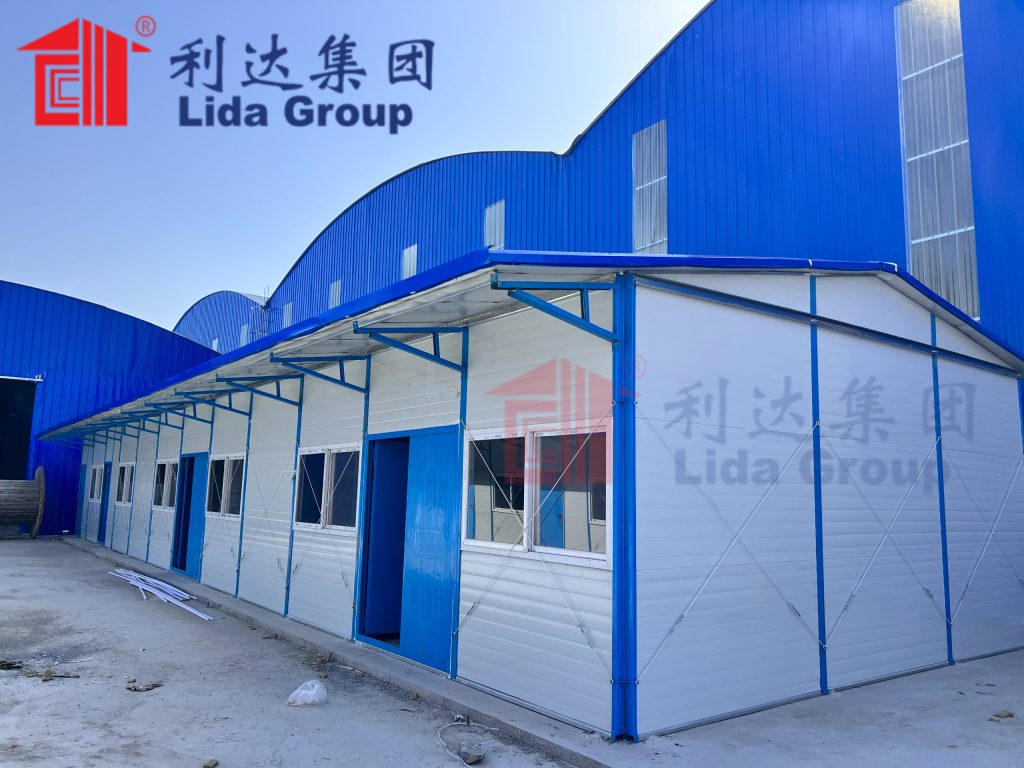
Design and Assembly: Simplicity Meets Speed
One of the most transformative aspects of Lida Group’s sandwich panel houses is their ease of assembly. These homes are designed using a modular approach, where each component—walls, roof, floor, and even windows and doors—is pre-fabricated and labeled for quick identification.
The assembly process follows a straightforward sequence:
1. **Foundation Preparation**: A simple concrete slab or screw pile foundation is prepared on-site. This step is faster than traditional deep foundations and minimizes soil disruption.
2. **Frame Erection**: A lightweight steel frame is erected to support the panels. The frame is designed for structural integrity and seismic resistance.
3. **Panel Installation**: Sandwich panels are slotted into place and secured with bolts or interlocking mechanisms. No wet trades (like bricklaying or plastering) are required, reducing labor and drying time.
4. **Roofing and Finishing**: Roof panels are installed, followed by gutters, windows, and doors. Interior finishes such as flooring and ceiling fixtures can be added as needed.
5. **Utilities Connection**: Electrical wiring, plumbing, and HVAC systems are pre-installed in the panels or added during assembly.
A typical 60-square-meter (645 sq ft) house can be assembled by a small team of four to six workers in just 2 to 3 days. In contrast, a conventional brick-and-mortar home of the same size might take 2 to 3 months to complete.
This rapid deployment is particularly valuable in emergency situations. After natural disasters such as earthquakes, floods, or hurricanes, Lida Group has delivered hundreds of temporary shelters within days, providing immediate relief to displaced families.
Energy Efficiency: A Core Design Principle
Energy efficiency is not an afterthought in Lida Group’s designs—it is a foundational principle. Sandwich panel houses are engineered to minimize heat loss in winter and heat gain in summer, significantly reducing the need for heating and cooling.
The insulating core of the panels plays a crucial role. For example, a 100mm thick PU panel can achieve a U-value (a measure of thermal transmittance) as low as 0.25 W/m²K, far surpassing the insulation performance of traditional brick walls. This means the interior remains warm in cold climates and cool in hot climates with minimal energy input.
Additional energy-saving features include:
– **Thermal Breaks**: Prevent heat transfer through metal frames.
– **Double-Glazed Windows**: Reduce heat loss and improve sound insulation.
– **Solar-Ready Roofs**: Designed to accommodate photovoltaic panels for on-site renewable energy generation.
– **Passive Design Elements**: Strategic window placement, overhangs, and ventilation channels enhance natural lighting and airflow.
In field tests conducted in northern China, Lida Group’s sandwich panel houses demonstrated up to 70% lower heating energy consumption compared to standard concrete buildings. In desert regions of the Middle East, indoor temperatures remained 8–10°C cooler than outside during peak summer heat.
These performance metrics translate into real savings for homeowners. Lower energy bills, reduced maintenance costs, and longer building lifespans make these homes not only environmentally friendly but also economically sustainable in the long run.
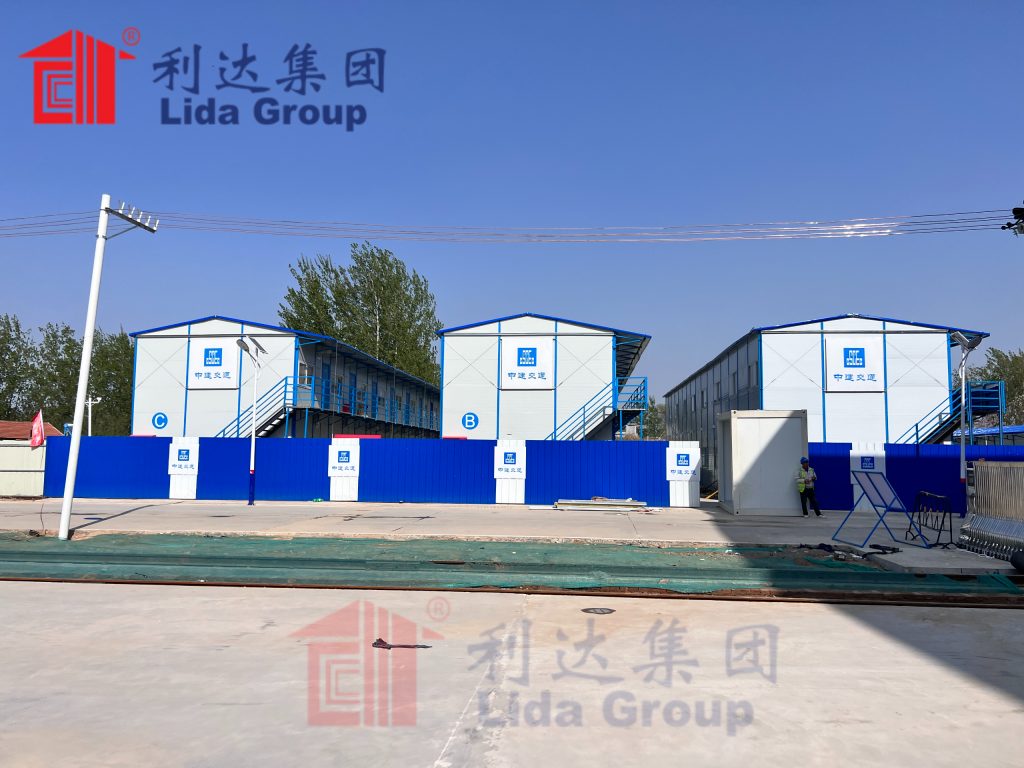
Cost-Effectiveness: Making Quality Housing Accessible
Affordability is perhaps the most critical factor in addressing the global housing crisis. Lida Group’s sandwich panel houses are designed to be low-cost without compromising on quality or safety.
The cost advantage stems from several factors:
– **Factory Mass Production**: Economies of scale reduce material and labor costs.
– **Reduced On-Site Labor**: Faster assembly means fewer worker days and lower wages.
– **Minimal Waste**: Precise cutting and standardized components result in less material waste (typically under 5%, compared to 20–30% in traditional construction).
– **Lower Transportation Costs**: Panels are lightweight and stackable, allowing more units per shipment.
– **No Need for Skilled Labor**: Assembly requires basic training, making it feasible in remote or underdeveloped areas.
A standard 60m² sandwich panel house from Lida Group can cost as little as $12,000–$18,000, depending on location, specifications, and local regulations. This is significantly lower than the cost of a comparable brick-and-mortar home in most developing countries.
Moreover, the low maintenance requirements and energy savings further reduce the total cost of ownership over time. For governments, NGOs, and developers working on large-scale housing projects, these savings can be multiplied across hundreds or thousands of units.
Durability and Safety: Built to Last
Despite their lightweight construction, sandwich panel houses are remarkably durable. Lida Group’s structures are engineered to withstand harsh environmental conditions, including high winds, heavy snow loads, and seismic activity.
The steel frames are treated with anti-corrosion coatings and designed to meet international building codes. Sandwich panels themselves are tested for fire resistance, impact strength, and long-term weathering. For example, rock wool core panels can withstand temperatures up to 1,000°C, providing critical fire protection.
In earthquake-prone regions such as Nepal and Indonesia, Lida Group has deployed modular housing units that have performed well during seismic events. Their flexibility and light weight reduce the risk of collapse, making them safer than rigid concrete structures in some scenarios.
Additionally, the panels are resistant to pests, mold, and moisture—common problems in tropical and humid climates. This durability ensures that homes remain habitable for decades with minimal upkeep.
Environmental Impact: A Sustainable Alternative
The construction industry is responsible for nearly 40% of global carbon emissions and 30% of raw material consumption. Traditional building methods rely heavily on concrete, steel, and bricks—materials with high embodied energy and environmental footprints.
Lida Group’s sandwich panel houses offer a more sustainable alternative:
– **Reduced Carbon Emissions**: Factory production is more energy-efficient than on-site construction. The use of lightweight materials also lowers transportation emissions.
– **Energy-Efficient Operation**: As discussed, the superior insulation reduces operational energy use over the building’s lifetime.
– **Recyclable Materials**: Steel frames and aluminum skins are fully recyclable. Insulation materials like rock wool are inert and can be reused or safely disposed of.
– **Minimal Site Disturbance**: Prefabrication reduces noise, dust, and land degradation at construction sites.
Furthermore, Lida Group is exploring the use of bio-based insulation materials and recycled content in its panels, aiming to further reduce environmental impact.
By shifting from linear (take-make-dispose) to circular construction models, Lida Group is helping to redefine sustainability in the built environment.
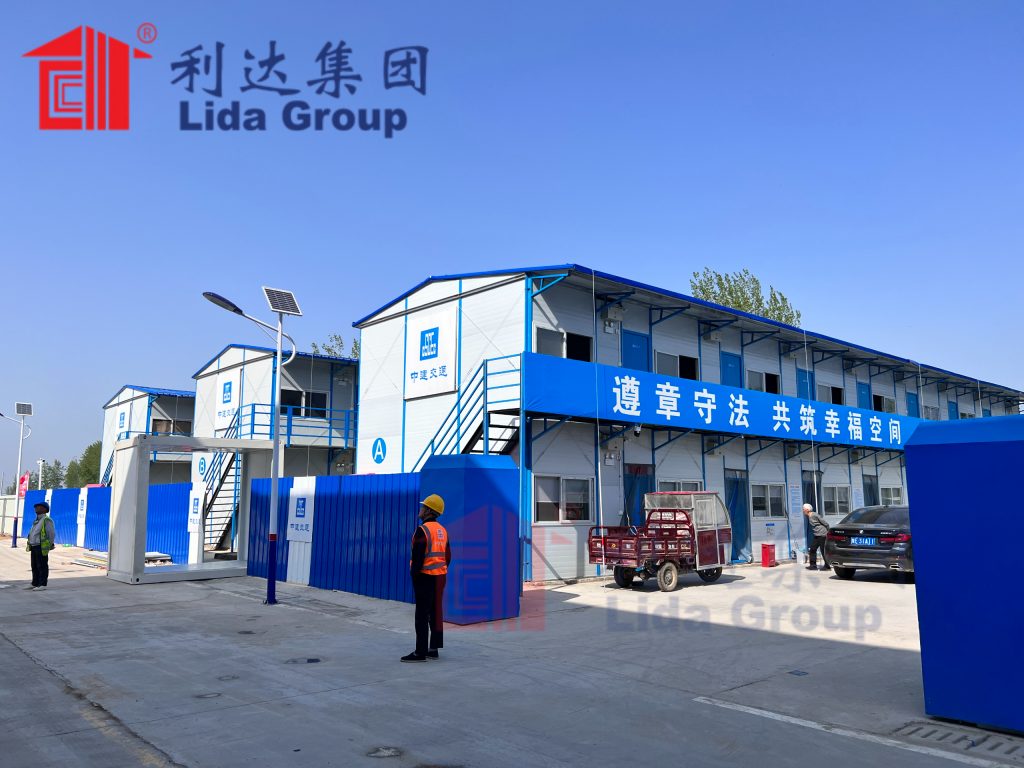
Real-World Applications: From Disaster Relief to Urban Housing
Lida Group’s sandwich panel houses are not theoretical concepts—they are being used around the world to solve real problems.
#### 1. **Disaster Relief and Emergency Shelters**
After the 2023 earthquake in Turkey and Syria, Lida Group partnered with international aid organizations to deliver over 1,000 temporary housing units within weeks. These shelters provided safe, insulated, and dignified living spaces for displaced families, many of whom had lost everything.
Similarly, in flood-affected regions of Bangladesh, Lida’s elevated modular homes have been deployed to protect communities during monsoon seasons. The quick assembly and water-resistant materials make them ideal for temporary relocation.
#### 2. **Affordable Housing for Low-Income Communities**
In Kenya, Lida Group collaborated with a local NGO to build a 200-unit housing complex for low-income workers near Nairobi. The project was completed in under three months, offering modern amenities at a fraction of the cost of traditional housing.
Residents reported improved living conditions, lower utility bills, and a sense of pride in their new homes. The success of the project has inspired similar initiatives in Uganda and Rwanda.
#### 3. **Remote and Rural Development**
In the mountainous regions of Peru, access to construction materials is limited, and transportation costs are high. Lida Group’s compact, flat-packed panels were shipped by truck and assembled by local villagers with minimal training. The homes now serve as schools, clinics, and community centers, improving access to essential services.
#### 4. **Urban Infill and Temporary Accommodation**
In rapidly growing cities like Ho Chi Minh City and Mumbai, land is scarce and expensive. Lida’s modular units have been used to create temporary housing for construction workers, students, and migrant populations. Their compact design and quick deployment make them ideal for underutilized urban spaces.
Customization and Aesthetic Appeal
A common misconception about prefabricated housing is that it is bland or uniform. Lida Group challenges this notion by offering a wide range of customization options.
Homeowners can choose from various panel colors, window styles, roof designs, and interior layouts. The modular nature of the system allows for flexible configurations—single-family homes, duplexes, multi-story buildings, or entire housing complexes.
Exterior finishes can mimic traditional materials like wood, stone, or stucco, blending seamlessly into local architectural styles. Interior spaces are designed for comfort and functionality, with options for modern kitchens, bathrooms, and smart home integration.
This adaptability ensures that Lida Group’s houses are not just functional but also culturally and aesthetically appropriate for diverse communities.
Technological Integration: Smart Homes of the Future
Lida Group is not resting on its current achievements. The company is actively integrating smart technologies into its housing systems.
Newer models include:
– **Pre-wired Electrical Systems**: Ready for smart lighting, security cameras, and internet connectivity.
– **Energy Monitoring**: Built-in sensors track energy usage and optimize HVAC performance.
– **Remote Climate Control**: Homeowners can adjust heating and cooling via smartphone apps.
– **Solar Power Integration**: Roofs are pre-designed to support solar panel installation.
These features position sandwich panel houses as not just affordable and efficient, but also technologically advanced—bridging the digital divide in underserved communities.
Challenges and Considerations
While the benefits are clear, sandwich panel houses are not without challenges.
– **Regulatory Hurdles**: Some countries have strict building codes that were written with traditional construction in mind. Gaining approval for modular homes can require extensive testing and certification.
– **Public Perception**: In certain regions, prefabricated homes are still seen as “temporary” or “inferior,” despite their proven durability.
– **Financing Models**: Banks and mortgage lenders may be hesitant to finance non-traditional housing, limiting access for individual buyers.
– **Local Adaptation**: Designs must be tailored to local climates, cultural preferences, and infrastructure availability.
Lida Group addresses these issues through partnerships with governments, educational campaigns, and pilot projects that demonstrate the long-term viability of its homes.
### The Role of Policy and Partnerships
For sandwich panel housing to reach its full potential, supportive policies are essential. Governments can accelerate adoption by:
– Updating building codes to include modular construction standards.
– Offering tax incentives or subsidies for energy-efficient homes.
– Procuring prefabricated housing for public projects like schools, hospitals, and social housing.
– Investing in workforce training for modular assembly.
Lida Group has already established partnerships with UN agencies, development banks, and national housing authorities. These collaborations help scale impact and ensure that solutions are aligned with local needs.
### The Future of Housing: Scalable, Sustainable, and Smart
The future of housing lies in innovation that balances cost, speed, sustainability, and quality. Lida Group’s sandwich panel houses exemplify this balance. They are not merely a stopgap solution but a long-term vision for how we build and live.
As urbanization continues and climate pressures intensify, the demand for resilient, low-carbon housing will only grow. Modular construction using sandwich panels offers a scalable model that can be replicated across continents.
Imagine a world where every displaced family has access to a safe, warm, and dignified home within days of a disaster. Imagine cities where affordable housing is built quickly and sustainably, reducing slums and improving quality of life. Imagine rural communities with access to modern infrastructure through modular schools and clinics.
This vision is not science fiction—it is already happening, one sandwich panel at a time.
### Case Study: The “Green Village” Project in Ethiopia
To illustrate the transformative potential of Lida Group’s technology, consider the “Green Village” project in Addis Ababa, Ethiopia.
In 2022, the Ethiopian government launched an initiative to provide affordable housing for civil servants and low-income families. Partnering with Lida Group, they selected a 10-hectare site on the city’s outskirts for a pilot project.
The plan called for 500 homes, each 70m², with two bedrooms, a kitchen, a bathroom, and a small living area. All homes were built using PU sandwich panels with steel frames and solar-ready roofs.
Key outcomes:
– **Construction Time**: The entire village was completed in 90 days.
– **Cost**: Average cost per unit: $16,500 (30% below market rate).
– **Energy Use**: 65% reduction in heating and cooling energy compared to conventional homes.
– **Employment**: 120 local workers were trained and employed during construction.
– **Community Impact**: Residents reported improved health, safety, and economic opportunities.
The success of the Green Village has led to plans for five more similar developments across Ethiopia, with a target of 10,000 units by 2027.
This project demonstrates that sandwich panel housing is not just technically feasible—it is socially and economically transformative.
Conclusion: Building a Better Tomorrow
Lida Group’s low-cost sandwich panel houses represent more than just a new way to build—they represent a new way to think about shelter, sustainability, and human dignity.
By combining energy efficiency with easy-assembly design, these homes offer a practical, scalable, and humane solution to some of the world’s most pressing challenges. They reduce carbon emissions, cut construction time, lower costs, and improve living conditions for millions.
The technology is proven. The demand is clear. The time to act is now.
As we look to the future, the question is not whether we can afford to adopt innovative housing solutions like sandwich panel houses, but whether we can afford not to. With climate change accelerating and urban populations growing, the status quo is no longer sustainable.
Lida Group has shown us what is possible when engineering meets empathy, when innovation serves humanity. Their sandwich panel houses are not just buildings—they are beacons of hope, resilience, and progress.
In the words of a resident of the Green Village in Ethiopia: “For the first time, I feel like I have a real home. It’s warm in winter, cool in summer, and I’m proud to live here.”
That is the power of good design. That is the promise of building for the future.
And with companies like Lida Group leading the way, that future is already within reach.

Related news
-
Lida Group Makes Quality Housing Accessible with Low-Cost Sandwich Panel Houses Designed as Easy-Assemble Prefab Mobile Homes
2025-09-24 17:52:15
-
Lida Group's Innovative Easy-Assemble Building Technology Simplifies Construction of Durable Low-Cost Sandwich Panel Homes
2025-09-25 09:46:54
-
Disaster Relief Transformed: Lida Group's Prefab Mobile Houses Offer Rapid, Easy-Assemble Shelter with Low-Cost Durability
2025-09-24 15:57:45
contact us
- Tel: +86-532-88966982
- Whatsapp: +86-13793209022
- E-mail: sales@lidajituan.com


